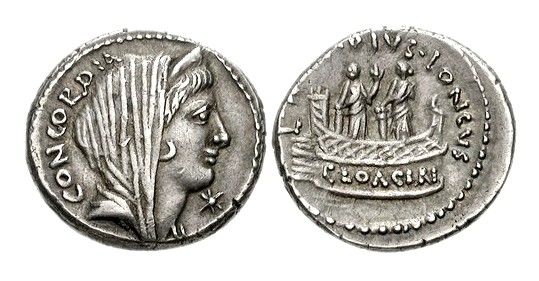Cloacina on:
[Wikipedia]
[Google]
[Amazon]
 Cloacina was a goddess who presided over the
Cloacina was a goddess who presided over the
 The small, circular shrine of Venus Cloacina was situated before the
The small, circular shrine of Venus Cloacina was situated before the
Information on Cloacina
 Cloacina was a goddess who presided over the
Cloacina was a goddess who presided over the Cloaca Maxima
The Cloaca Maxima ( lat, Cloāca Maxima, lit. ''Greatest Sewer'') was one of the world's earliest sewage systems. Its name derives from Cloacina, a Roman goddess. Built during either the Roman Kingdom or early Roman Republic, it was constructed ...
('Greatest Drain'), the main interceptor discharge outfall of the system of sewers in Rome
, established_title = Founded
, established_date = 753 BC
, founder = King Romulus (legendary)
, image_map = Map of comune of Rome (metropolitan city of Capital Rome, region Lazio, Italy).svg
, map_caption ...
.
Name
Thetheonym
A theonym (from Greek ''theos'' (Θεός), " god"'','' attached to ''onoma'' (ὄνομα), "name") is the proper name of a deity.
Theonymy, the study of divine proper names, is a branch of onomastics (the study of the etymology, history, and ...
''Cloācīna'' is a derivative of the noun ''cloāca'' ('sewer, underground drainage'; cf. ''cluere'' 'to purify'), itself from Proto-Italic
The Proto-Italic language is the ancestor of the Italic languages, most notably Latin and its descendants, the Romance languages. It is not directly attested in writing, but has been reconstructed to some degree through the comparative method. P ...
*''klowā''-, ultimately from Proto-Indo-European
Proto-Indo-European (PIE) is the reconstructed common ancestor of the Indo-European language family. Its proposed features have been derived by linguistic reconstruction from documented Indo-European languages. No direct record of Proto-Indo- ...
*''ḱleuH-o-'' ('clean'). A cult-title of Venus, ''Cloācīna'' may be interpreted as meaning 'The Purifier'.
Cult
The Cloaca Maxima was said to have been begun by Tarquinius Priscus, one of Rome's Etruscan kings, and finished by another,Tarquinius Superbus
Lucius Tarquinius Superbus (died 495 BC) was the legendary seventh and final king of Rome, reigning 25 years until the popular uprising that led to the establishment of the Roman Republic.Livy, ''ab urbe condita libri'', I He is commonly known ...
: Cloacina might have originally been an Etruscan deity. According to one of Rome's foundation myths, Titus Tatius
According to the Roman foundation myth, Titus Tatius was the king of the Sabines from Cures and joint-ruler of the Kingdom of Rome for several years.
During the reign of Romulus, the first king of Rome, Tatius declared war on Rome in resp ...
, king of the Sabines, erected a statue to Cloacina at the place where Romans and Sabines met to confirm the end of their conflict, following the rape of the Sabine women
The Rape of the Sabine Women ( ), also known as the Abduction of the Sabine Women or the Kidnapping of the Sabine Women, was an incident in Roman mythology in which the men of Rome committed a mass abduction of young women from the other cit ...
. Tatius instituted lawful marriage between Sabines and Romans, uniting them as one people, ruled by himself and by Rome's founder, Romulus. The peace between Sabines and Romans was marked by a cleansing ritual using myrtle, at or very near an ancient Etruscan shrine to Cloacina, above a small stream that would later be enlarged as the main outlet for Rome's main sewer, the Cloaca Maxima
The Cloaca Maxima ( lat, Cloāca Maxima, lit. ''Greatest Sewer'') was one of the world's earliest sewage systems. Its name derives from Cloacina, a Roman goddess. Built during either the Roman Kingdom or early Roman Republic, it was constructed ...
. As myrtle was one of Venus' signs, and Venus was a goddess of union, peace and reconciliation, Cloacina was recognised as Venus Cloacina (Venus the Cleanser). She was also credited with the purification of sexual intercourse within marriage.
 The small, circular shrine of Venus Cloacina was situated before the
The small, circular shrine of Venus Cloacina was situated before the Basilica Aemilia
The Basilica Aemilia ( it, Basilica Emilia, links=no) was a civil basilica in the Roman Forum, in Rome, Italy. Today only the plan and some rebuilt elements can be seen. The Basilica was 100 meters (328 ft) long and about 30 meters (98&nbs ...
on the Roman Forum and directly above the Cloaca Maxima. Some Roman coins had images of Cloacina's shrine. The clearest show two females, presumed to be deities, each with a bird perched on a pillar. One holds a small object, possibly a flower; birds and flowers are signs of Venus, among other deities. The figures may have represented the two aspects of the divinity, Cloacina-Venus.
References
Bibliography
*Further reading
Information on Cloacina
See also
*Toilet god
A toilet god is a deity associated with latrines and toilets. Belief in toilet gods – a type of household deity – has been known from both modern and ancient cultures, ranging from Japan to ancient Rome. Such deities have been associated with h ...
Love and lust goddesses
Roman goddesses
Toilet goddesses
Sewerage
{{AncientRome-myth-stub